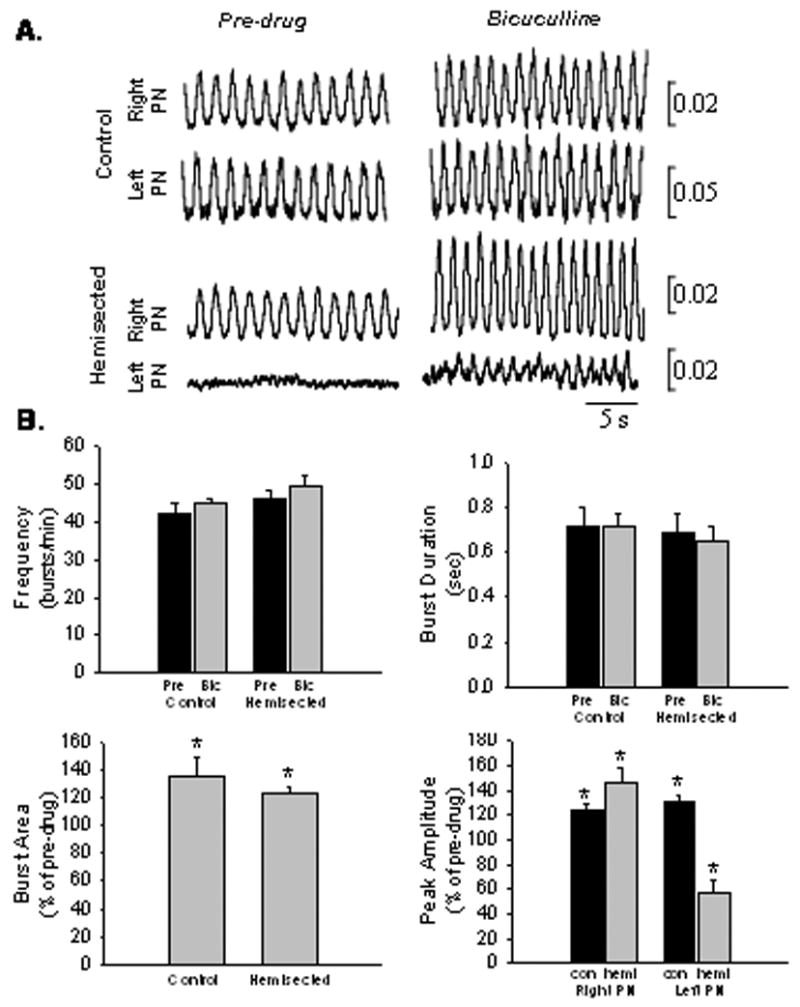Figure 2.

A. Representative tracings of integrated, right and left phrenic neurograms (PN) taken before and after bicuculline was applied to the cervical spinal cord. Note that bicuculline increased the peak height of the phrenic burst in both control and spinal cord injured rats. In addition, bicuculline resulted in the induction of crossed phrenic activity in all spinal cord injured rats. B. Graphs showing that bicuculline caused no significant change in respiratory frequency (p=0.243) or the burst duration of controls (p=0.804) and hemisected rats (p=0.884). Bicuculline significantly increased burst area in both control and contralateral output in hemisected rats (p=0.006), as well as the burst peak amplitude bilaterally in control and hemisected rats (p=0.007). Since there was no neural activity in the left phrenic nerve of hemisected rats before drug was applied, the crossed phrenic activity that was induced by bicuculline application was expressed as a percentage of the right phrenic nerve after bicuculline.
